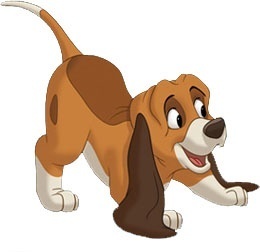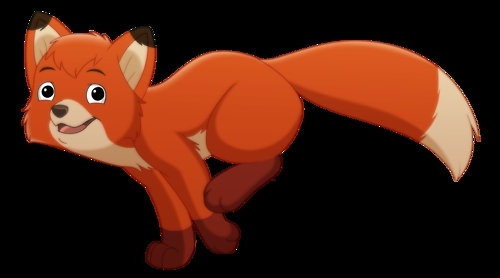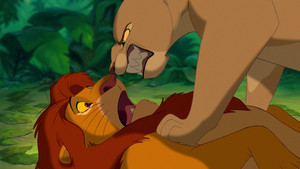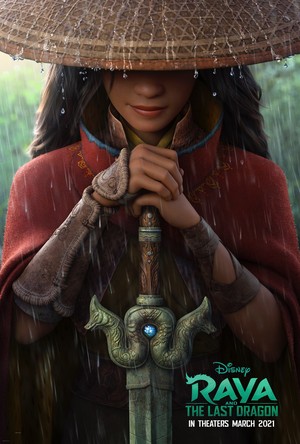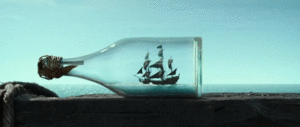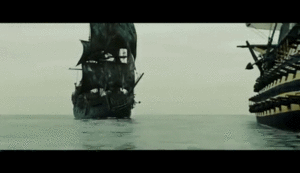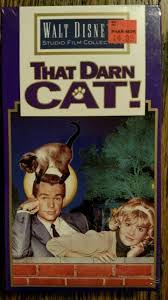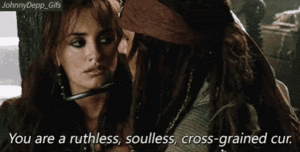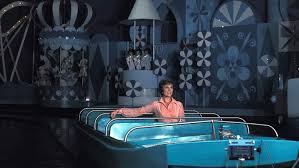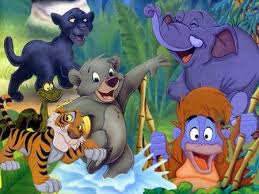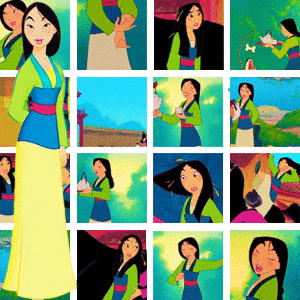When I started this 文章 series, I had to make a decision. Officially, nearly all 迪士尼 电影院 are based on some sort of 来源 text. In reality, it is often something really obscure and practically forgotten. So I made a decision early on: That I would only discuss the books, which are known enough to have an own Wikipedia article. This distinction served me fairly well, with one exception and this is The 狐狸 and the Hound. When this book was published, it was highly praised, and therefore it does have an article. But nowadays it is so hard to come 由 that 你 have to pay a three digits sum to actually get an edition – provided that 你 find one.
你 will understand that I was unable read this book under the circumstances. But I didn’t want to ignore it either because, well, Disney’s The 狐狸 and the Hound is somewhat infamous for being very far removed from the actual 来源 text. Considering that 迪士尼 often tends to use the 来源 text 更多 as a stepping stone, I was wondering why in this case so many people felt compelled to 评论 on it.
So what I did, was hunting for all sources I could find about the topic, trying to figure out what kind of book has been buried 由 history. This 文章 is the result of my findings.
1. Twisting the source
The first thing I noticed is that 迪士尼 took a couple of elements of the book, but twisted them around. For starters, it is true that Tod grows up with humans – but not just any humans but the ones who killed his mother and the rest of his litter. It is also true that he goes back into the wild, 由 his own volition though. It is also true that he finds a 泼妇, 雌狐 in the forest…two of them, and in both cases the 泼妇, 雌狐 and the whole litter are killed (there is apparently one cup which is simply not mentioned again in the story and therefore might survive).
It is also true that there is another dog named Chief in the story, but the roles of him and Copper are actually exchanged. In the book, Copper is the aging dog and leader of the pack, and when Master (that’s the way his owner is called all the time) buys the stronger and younger Chief, Copper hates him because he fears that he will replace him.
There is a scene in which a 熊 attacks Master (during a 熊 hunt, not out of the blue), but Copper does NOT leap to his defence, he is too afraid. Chief is the hero of the day, and the resentment Copper feels grows even stronger.
The scene in which Chief gets hit 由 a train happens in the book too, but the situation is entirely different. One, Tod deliberately lures Chief on the tracks to get rid of him. In the 迪士尼 version, the whole thing is an accident. Two, Chief dies. In the 迪士尼 version, he survives. And three, it is Master, not Copper who swears revenge and therefore trains him to hunt no other 狐狸 than Tod in the future.
And that is apparently just the beginning of a livelong hunt. During the book, Master loses 更多 and 更多 of his land and every single dog save for Copper. At the very end, there is one last hunt which ends when Tod finally breaks down due to exhaustion (and old age). Copper on the other hand is rescued 由 his Master and is allowed to live happily for a few month. But then Master has to go into a nursing 首页 where 狗 are not allowed. The book ends with him taking his shotgun, ordering Copper to lie down and covering his eyes….I guess it is pretty clear what happens next.
2. A look at the basics
It is pretty obvious that the original book is downright depressing. As far as I can tell, there are three big themes. One is the destruction of the rural areas and in its wake, the destruction of a particular way of life. Connected to it is the 秒 theme, the way humans treat their environment. There is for example one episode in which rabies spread. The solution to use poison in order to get rid of the foxes, not only kills a lot of other animals, a child dies when it ingests some of it. The book also points out how everything which is feed the 动物 moves up the 食物 chain – and unlike Tod, who becomes a vegetarian for a while, because he realizes that something is not right with the flesh, humans are not as sensitive.
The third theme is the way 动物 think. Daniel P. Mannix did a lot of research into the way, 动物 actually act and tried to illustrate their thought processes as realistic as possible. Tod is smarter than the other foxes in the forest due to his unusual upbringing, but he doesn’t understand humans most of the time. For him only knowledge which helps him to survive counts.
And Copper, despite hunting Tod practically his whole life, doesn’t feel any hate towards him. He does it because he is trained to do his master’s bidding. For him it is about being the leader of his pack and having the attention of his master, nothing more.
Now the 迪士尼 version is another matter altogether. For one, all the 动物 in it act very human. And two, this is the story of an unlikely friendship between two 动物 who were born to be enemies of each other. Is it a bad story to tell? No, but it has nothing to do with the actual book. In fact, I am wondering why 迪士尼 even bothered to buy the rights. Rename the characters, replace the scene on the tracks (it is way too similar to “The Aristocats” either way), and 你 couldn’t even accuse 迪士尼 of plagiarism.
3. On its own merit
But let’s take a look on the movie independent from the 来源 text. Speaking of the tracks: That is in a way the whole crux in the movie. In typical 迪士尼 fashion, The 狐狸 and the Hound glosses over a lot of aspects. Especially over the little fact that most of the 动物 featured in the movie are predators. They need to kill to survive (how Dinky and Boomer manage to not catch one 毛虫, 毛毛虫 the whole summer and not dying of hunger is a riddle in itself). But the scene on the tracks is known to have been a bone of contention between the animators (and one of the reasons Don Bluth left the studios). The main issue was: should have Chief died 或者 not?
Personally, I think that neither is a good solution. Because the issue is not if he died 或者 not, it is Tod culpability. The scene needed a rewrite, with Tod doing deliberately something which might have killed Chief, 或者 at least Copper having reason to believe that he planned to kill him. Copper shifting his own guilty conscience about letting Tod escape (and even having one in the first place) only works if Chief looks like the innocent, the tricked party. While someone dying would amplify the likelihood overreaction and thoughts of revenge, it would still have been a disservice to the movie if the conflict is only based on a misunderstanding and not on Tod 表演 like a 狐狸 and Copper reacting like a hunting dog.
But this aside, there is a lot to like about the movie. The animation, mostly done in 更多 mute colours than usual for an animated movies, the character 设计 and the 总体, 整体 tone, which is a little bit 更多 serious than the standard animated movie, especially since it moves away from the typical hero against the villain structure. Amos Slade is not necessarily a bad man, he is just a hunter. Before he starts pursuing Tod in a protected area, his point of view is somewhat understandable, even if his temper leaves a lot to be desired. It is very appropriate that this movie ends on a positive, alas bittersweet note, instead of the usual villain defeat. Stand-out scene are the one when Tod is left in the forest (a real tear-jerker), his first night in the woods and the attack of the 熊 (which is really terrifying if 你 see it on the big screen).
4. Conclusion
The 狐狸 and the Hound is a terrible adaptation. But is it nevertheless a good movie. One of the best 迪士尼 made during the dark era. It has some flaws which prevents it from reaching real greatness, but it is certainly worth a watch. It is just too bad that the book it was supposedly based on ended up mostly in obscurity. It does sound like an unusual read.
你 will understand that I was unable read this book under the circumstances. But I didn’t want to ignore it either because, well, Disney’s The 狐狸 and the Hound is somewhat infamous for being very far removed from the actual 来源 text. Considering that 迪士尼 often tends to use the 来源 text 更多 as a stepping stone, I was wondering why in this case so many people felt compelled to 评论 on it.
So what I did, was hunting for all sources I could find about the topic, trying to figure out what kind of book has been buried 由 history. This 文章 is the result of my findings.
1. Twisting the source
The first thing I noticed is that 迪士尼 took a couple of elements of the book, but twisted them around. For starters, it is true that Tod grows up with humans – but not just any humans but the ones who killed his mother and the rest of his litter. It is also true that he goes back into the wild, 由 his own volition though. It is also true that he finds a 泼妇, 雌狐 in the forest…two of them, and in both cases the 泼妇, 雌狐 and the whole litter are killed (there is apparently one cup which is simply not mentioned again in the story and therefore might survive).
It is also true that there is another dog named Chief in the story, but the roles of him and Copper are actually exchanged. In the book, Copper is the aging dog and leader of the pack, and when Master (that’s the way his owner is called all the time) buys the stronger and younger Chief, Copper hates him because he fears that he will replace him.
There is a scene in which a 熊 attacks Master (during a 熊 hunt, not out of the blue), but Copper does NOT leap to his defence, he is too afraid. Chief is the hero of the day, and the resentment Copper feels grows even stronger.
The scene in which Chief gets hit 由 a train happens in the book too, but the situation is entirely different. One, Tod deliberately lures Chief on the tracks to get rid of him. In the 迪士尼 version, the whole thing is an accident. Two, Chief dies. In the 迪士尼 version, he survives. And three, it is Master, not Copper who swears revenge and therefore trains him to hunt no other 狐狸 than Tod in the future.
And that is apparently just the beginning of a livelong hunt. During the book, Master loses 更多 and 更多 of his land and every single dog save for Copper. At the very end, there is one last hunt which ends when Tod finally breaks down due to exhaustion (and old age). Copper on the other hand is rescued 由 his Master and is allowed to live happily for a few month. But then Master has to go into a nursing 首页 where 狗 are not allowed. The book ends with him taking his shotgun, ordering Copper to lie down and covering his eyes….I guess it is pretty clear what happens next.
2. A look at the basics
It is pretty obvious that the original book is downright depressing. As far as I can tell, there are three big themes. One is the destruction of the rural areas and in its wake, the destruction of a particular way of life. Connected to it is the 秒 theme, the way humans treat their environment. There is for example one episode in which rabies spread. The solution to use poison in order to get rid of the foxes, not only kills a lot of other animals, a child dies when it ingests some of it. The book also points out how everything which is feed the 动物 moves up the 食物 chain – and unlike Tod, who becomes a vegetarian for a while, because he realizes that something is not right with the flesh, humans are not as sensitive.
The third theme is the way 动物 think. Daniel P. Mannix did a lot of research into the way, 动物 actually act and tried to illustrate their thought processes as realistic as possible. Tod is smarter than the other foxes in the forest due to his unusual upbringing, but he doesn’t understand humans most of the time. For him only knowledge which helps him to survive counts.
And Copper, despite hunting Tod practically his whole life, doesn’t feel any hate towards him. He does it because he is trained to do his master’s bidding. For him it is about being the leader of his pack and having the attention of his master, nothing more.
Now the 迪士尼 version is another matter altogether. For one, all the 动物 in it act very human. And two, this is the story of an unlikely friendship between two 动物 who were born to be enemies of each other. Is it a bad story to tell? No, but it has nothing to do with the actual book. In fact, I am wondering why 迪士尼 even bothered to buy the rights. Rename the characters, replace the scene on the tracks (it is way too similar to “The Aristocats” either way), and 你 couldn’t even accuse 迪士尼 of plagiarism.
3. On its own merit
But let’s take a look on the movie independent from the 来源 text. Speaking of the tracks: That is in a way the whole crux in the movie. In typical 迪士尼 fashion, The 狐狸 and the Hound glosses over a lot of aspects. Especially over the little fact that most of the 动物 featured in the movie are predators. They need to kill to survive (how Dinky and Boomer manage to not catch one 毛虫, 毛毛虫 the whole summer and not dying of hunger is a riddle in itself). But the scene on the tracks is known to have been a bone of contention between the animators (and one of the reasons Don Bluth left the studios). The main issue was: should have Chief died 或者 not?
Personally, I think that neither is a good solution. Because the issue is not if he died 或者 not, it is Tod culpability. The scene needed a rewrite, with Tod doing deliberately something which might have killed Chief, 或者 at least Copper having reason to believe that he planned to kill him. Copper shifting his own guilty conscience about letting Tod escape (and even having one in the first place) only works if Chief looks like the innocent, the tricked party. While someone dying would amplify the likelihood overreaction and thoughts of revenge, it would still have been a disservice to the movie if the conflict is only based on a misunderstanding and not on Tod 表演 like a 狐狸 and Copper reacting like a hunting dog.
But this aside, there is a lot to like about the movie. The animation, mostly done in 更多 mute colours than usual for an animated movies, the character 设计 and the 总体, 整体 tone, which is a little bit 更多 serious than the standard animated movie, especially since it moves away from the typical hero against the villain structure. Amos Slade is not necessarily a bad man, he is just a hunter. Before he starts pursuing Tod in a protected area, his point of view is somewhat understandable, even if his temper leaves a lot to be desired. It is very appropriate that this movie ends on a positive, alas bittersweet note, instead of the usual villain defeat. Stand-out scene are the one when Tod is left in the forest (a real tear-jerker), his first night in the woods and the attack of the 熊 (which is really terrifying if 你 see it on the big screen).
4. Conclusion
The 狐狸 and the Hound is a terrible adaptation. But is it nevertheless a good movie. One of the best 迪士尼 made during the dark era. It has some flaws which prevents it from reaching real greatness, but it is certainly worth a watch. It is just too bad that the book it was supposedly based on ended up mostly in obscurity. It does sound like an unusual read.


